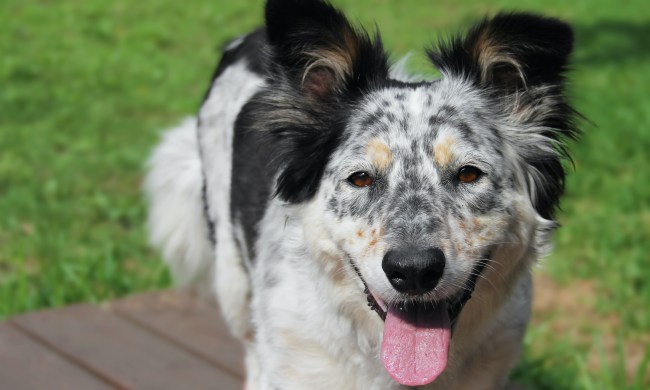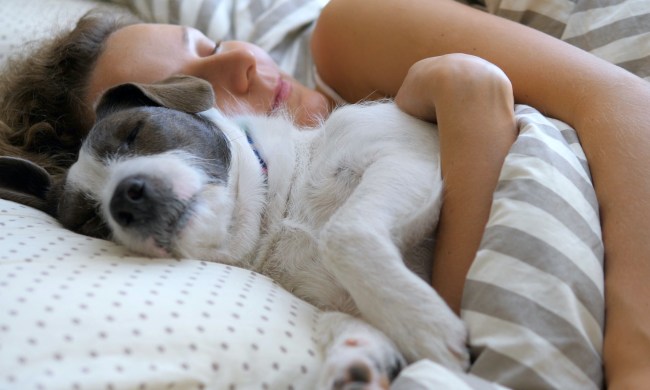We’ve all watched, liked, and shared jaw-dropping (and sometimes heartwarming) videos of dogs protecting their owners. Whether they’re saving their human family members from would-be assailants or house fires, these courageous canines deserve every bit of admiration they receive. But what happens when protectiveness goes a step too far? You provide your four-legged friend with love, companionship, and plenty of tasty kibble, so it stands to reason that he wants to keep you safe.
However, while your pup’s protective instincts may be welcome when you’re in danger, your dog’s innate desire to defend you can easily become problematic if he begins to see other animals (or people) as a threat to your wellbeing. Here’s what you need to know about gaining control of your overprotective dog before it’s too late.
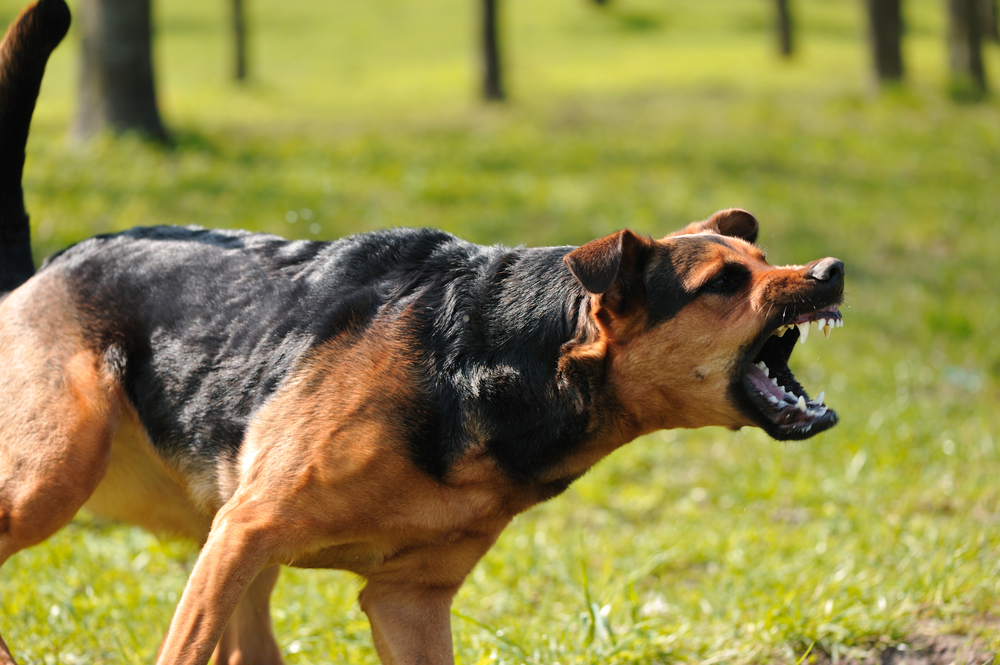
What can I do if my dog is overprotective?
Handling an overprotective dog can be a hassle, but it’s important to remember that your dog isn’t trying to be naughty. When Fido’s hackles rise at the sight of strangers, it’s simply because your pooch loves you and wants to keep you safe. You should refrain from yelling at your dog when he shows signs of overprotectiveness. To dogs, a raised voice is essentially a bark, and your pup will be all too happy to add to the cacophony. So, what should you do instead?
According to world-famous dog behaviorist, Cesar Millan, pet parents should, “Practice maintaining calm-assertive energy. At least part of the reason your dog acts out when you’re with her is because your energy is telling her to do so.”
Consider your body language. Are you tense when you’re being approached by a large dog you’ve never encountered before? Do you instinctively become more guarded in crowded public space while walking your dog? If your dog thinks you feel unsafe, he’s much more likely to become overprotective.
Here are a few ways you can help manage your overprotective dog:
Begin training early
Whether you’ve had your dog since he was a puppy, or you’ve recently adopted an older dog, you should begin training him immediately. Contrary to popular belief, it’s never too late to teach an old dog new tricks. These tips will make the training process easier:
- Speak to your dog in a calm, firm voice during training
- Keep obedience lessons short and sweet, around 10-15 minutes
- Learn your dog’s body language, so you can better predict his behavior in a given situation
- Make sure your pup gets plenty of mental and physical stimulation, as this can combat anxiety and aggression
- Always keep your pooch on a leash in public spaces
Start off slowly
Wanting to spend time at the dog park is only natural. You and your pup both get to enjoy fresh air and sunshine, and it’s a great place for your dog to make new friends. But when your dog has overprotective tendencies, the last thing you should do is overwhelm him. Start by introducing your dog to close friends and family members. When he can handle being around your inner circle, try taking him for a brief walk in your neighborhood. You’ll be close to home if your dog begins to misbehave, and he’ll be able to acclimate to the presence of strangers and their dogs.
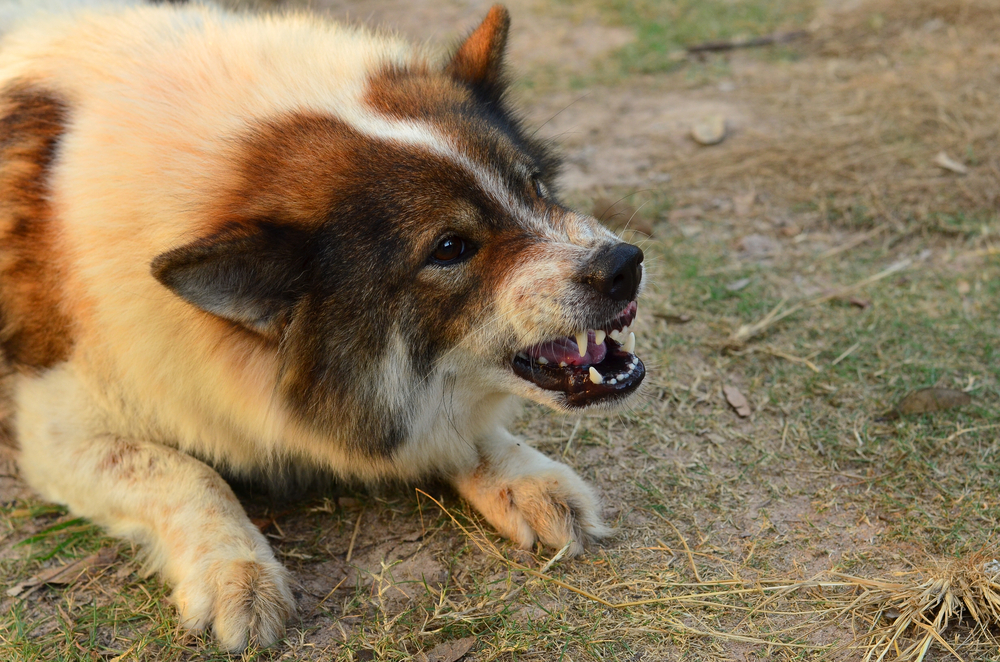
How to call off an overprotective dog?
Commanding your dog to sit when he’s exposed to a stress trigger is a good place to start. However, if he continues to snark, bark, or attempt to lunge, the best thing you can do is remove your dog from the situation. While you should never raise your voice or hit your dog, you’ll want to speak in a firm tone. Not only will this let him know that you mean business, but it also teaches him that you’re in control, and he doesn’t need to protect you right now. After all, if your dog sees you as his pack alpha, then he’ll be much more inclined to follow your lead.
What risks are involved with an aggressive dog?
Your dog is your best friend, your constant companion, and your greatest protector. But if his protective instincts have spiraled into outright aggression, it can lead to serious problems. Whether your dog is a tiny chihuahua or a massive Irish Wolfhound, aggression can lead to devastating injuries to people and other pets. Aggressive dogs are much more likely to be rehomed or simply abandoned by their pet parents. Unfortunately, many shelters turn away aggressive dogs. Even more distressingly, an aggressive dog stands a much greater risk of being euthanized if he’s accepted by a shelter in the first place, says applied animal behaviorist Patricia B. McConnell, PhD, CAAB Emeritus.
An aggressive dog may become anxious (and potentially violent) when faced with stress triggers. While some dogs bare their teeth, snarl, or flatten their ears against their scalp as a warning sign, others may growl, snap, or bite without warning. Unpredictable aggression is the most dangerous form. According to the ASPCA, “Dogs who give warning before they bite allow people and other animals time to retreat and avoid getting hurt.”
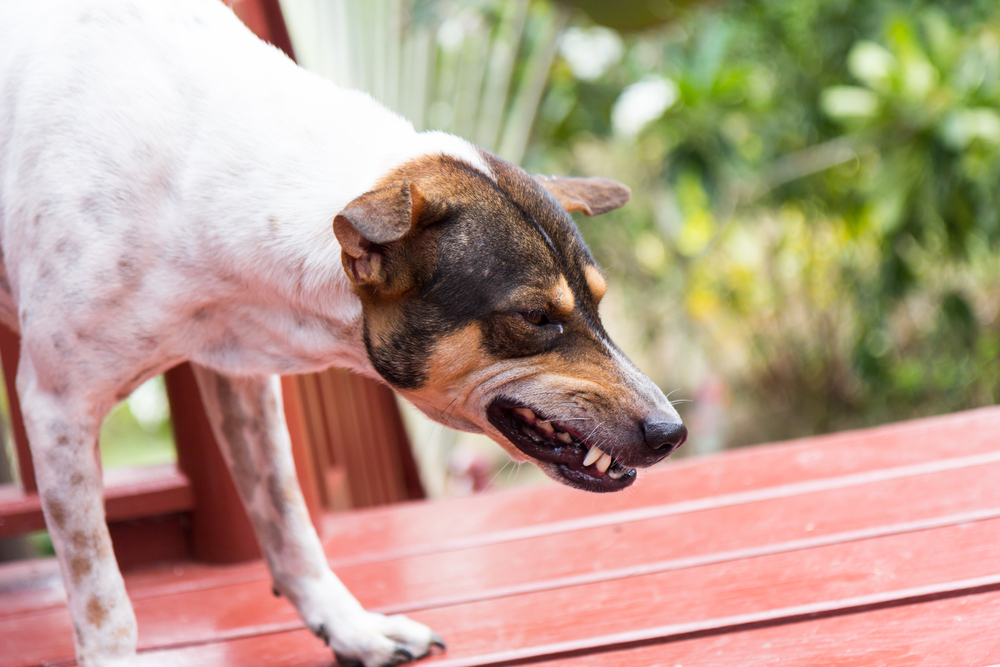
Most dogs, even untrained dogs, will protect their pet parents if they sense danger. That being said, overprotectiveness can quickly become aggression, putting you, your dog, and others at risk. We recommend obedience lessons, plenty of mental and physical stimulation, a structured lifestyle, and maintaining a calm, confident approach to handling your dog. When in doubt, contact a professional trainer. There’s no shame in needing a little help managing your pup.


